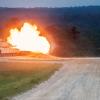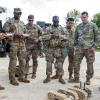The Army is about halfway through a five-year, $2.8 billion family housing improvement plan. And leaders say they are determined to get it right with aggressive oversight of Army private-sector housing partners and an ear to the ground in the service’s residential communities.
The activity is happening on 49 installations where housing was privatized more than 20 years ago under the DoD Military Housing Privatization Initiative. The Army’s Residential Communities Initiative (RCI) was a public-private venture that would take the Army out of the business of managing its own housing and...















